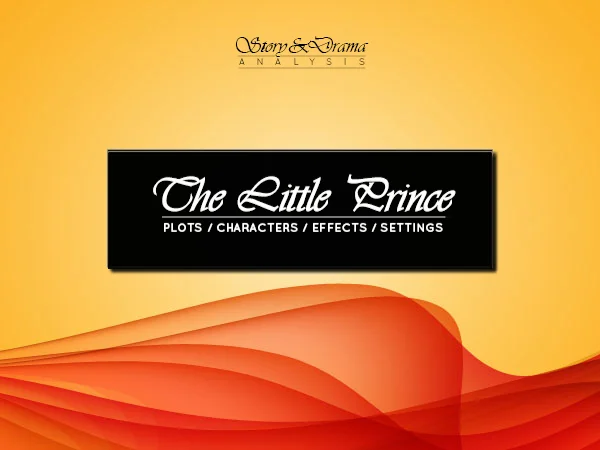 |
|
PDF, 75 pages
|
Here is our analysis of The Little Prince, the story for children that makes everybody cry. 175 million copies were sold around the world.
The Little Prince – Story analysis – Chapter XXV – The well and the water (“One must look with the heart”)
The chapter opens on the prince criticizing these men who are always in a hurry without even knowing what they are searching for.
This comment of the prince, on direct speech mode but detached from the current situation, seems to be floating in time. This strange distance of speech just after the narrative situation has reached a point of intense emotion – we feel a huge relief since the narrator-airman is finally out of the danger zone after 23 chapters of uncertainty – this distance looks like a confirmation of the allegorical scope of this story.
The well that the narrator discovers does not look like a normal saharian well, but more like a village well, and when they activate the rope and the bucket, this well seems to be singing; happy with it the little prince wants to drink.
This mystery also confirms the allegorical meaning of the episode.
The prince, then the airman, drink some of this water, while discussing its meaning: it is a water of feast, a gift, a water good for the heart. The prince comments: “But the eyes are blind. One must look with the heart…”
We have the impression that all the story reaches a peek. The story was not aimed at giving the dramatic answer of a material plot, but at delivering an intense spiritual message.
The prince wants the narrator to hold his promise and draw a muzzle for the sheep, so as to protect the flower he is responsible for!
The little prince thus shows that he has understood and integrated the messages of wisdom learnt during his friendship with the fox.
Structure: the question about the muzzle reconnects the action line with chapter III’s plot “draw me a sheep”, and at the same time this change of topic forms the beginning of a new plot, telling the departure of the prince: Hero, the prince, goal, to go back home and take care of his flower. The narrator‘s actantial role is unclear: he collaborates, as a Helper of the Hero, but we can feel that he has got so attached to the Hero that he would prefer him to stay, which opposes the goal and thus looks like a position of Antagonist, though it will stay a temptation.
The airman pulls out his drawings – those we saw here and there all along the book – and the prince kindly mocks the naiveness of the drawings of baobabs, of the fox, etc.
Funny reversion of roles: ironically it is the child who finds the adult naive and bad in drawing, and not the contrary… 🙂
The airman draws the muzzle, then they cryptically discuss about the departure of the prince, because the next day will be the birthday of his descent on Earth. The little prince sends the airman to fix his machine, and gives him an appointment for the next day. Remembering the story of the fox, the airman has a bad feeling…
The hypothesis of the prince’s departure gets confirmed, told in a logics of modest euphemism, leading to an even more upsetting emotional silence.
…
Read our full analysis of The Little Prince, by Antoine de Saint-Exupery and improve your writing skills